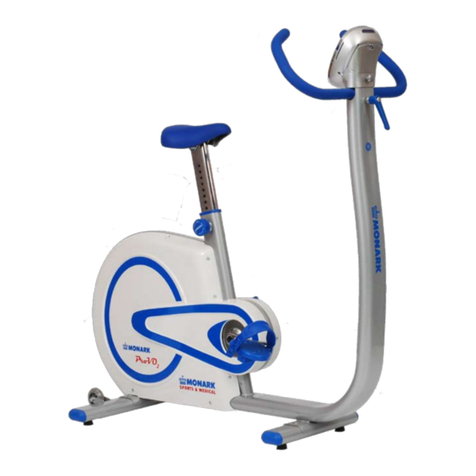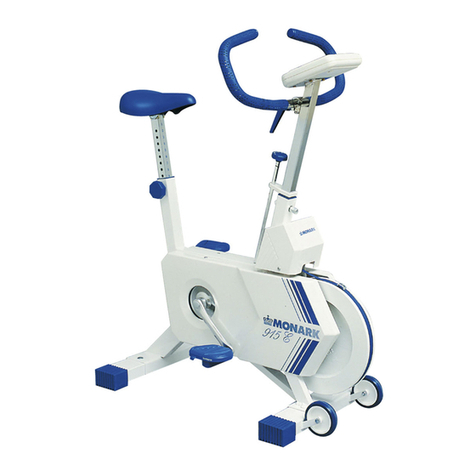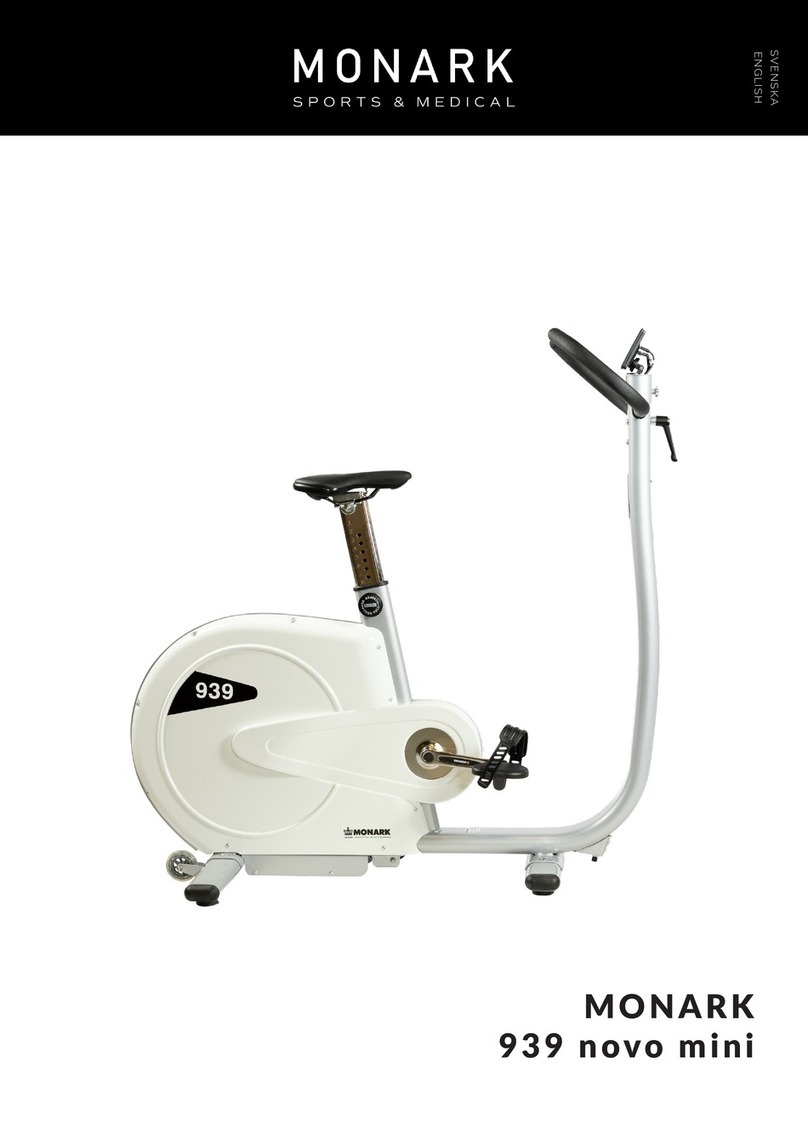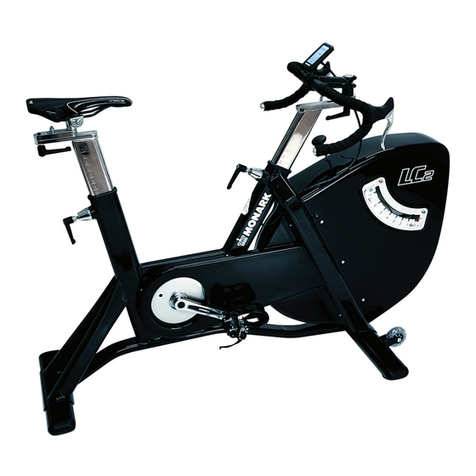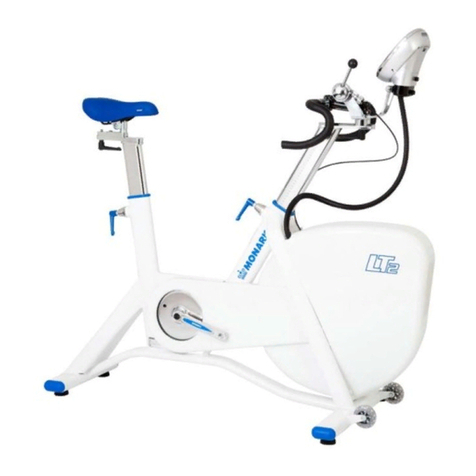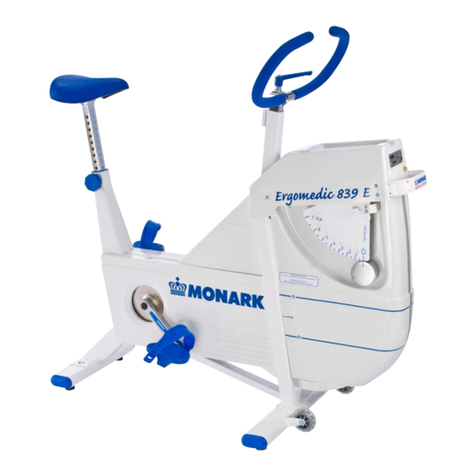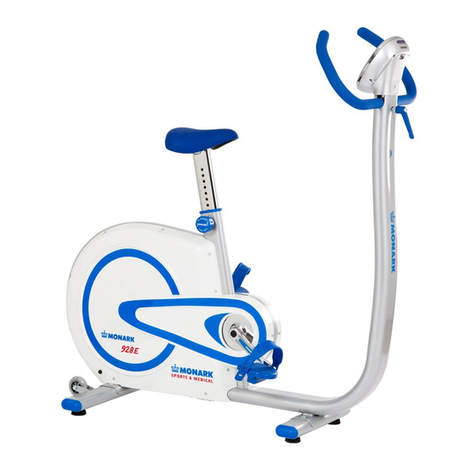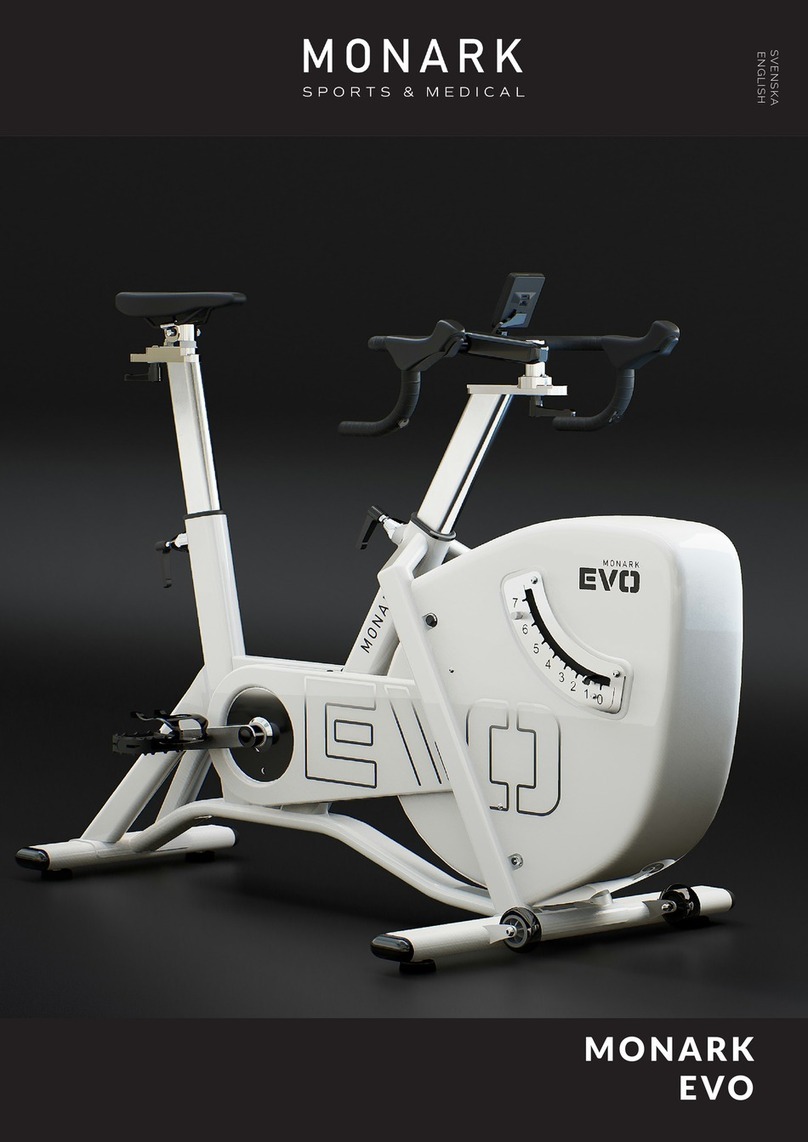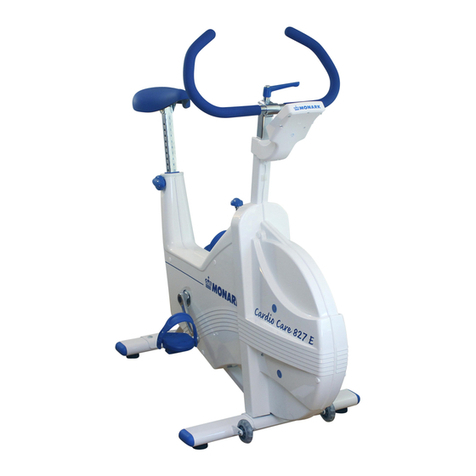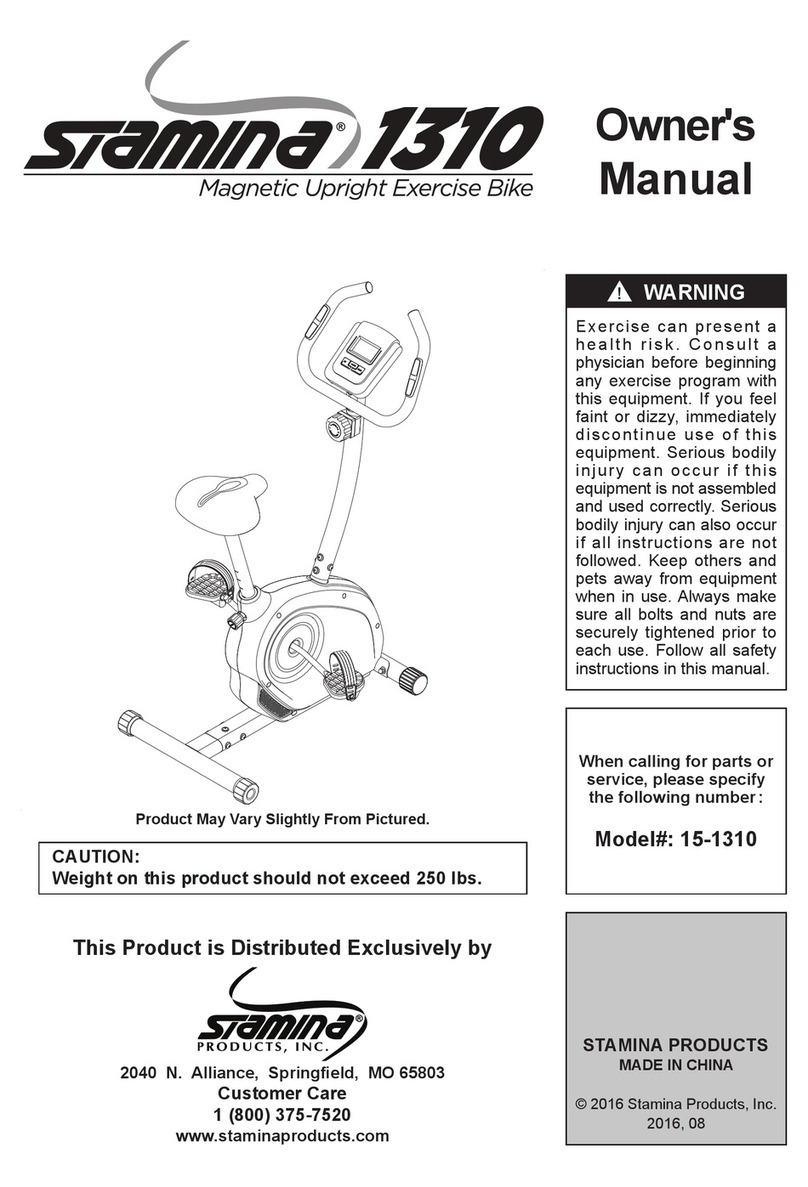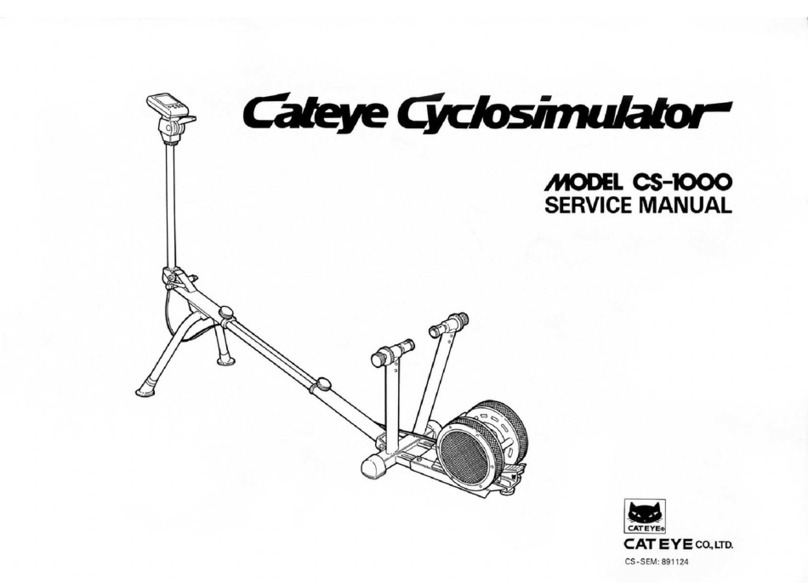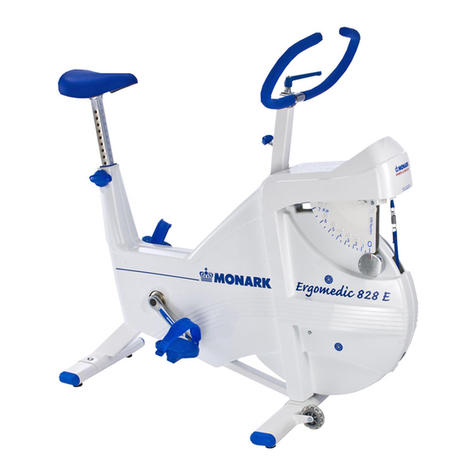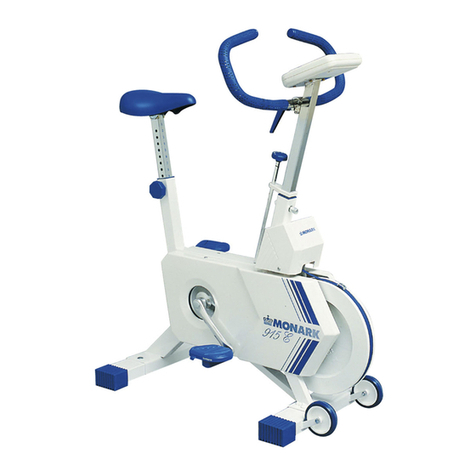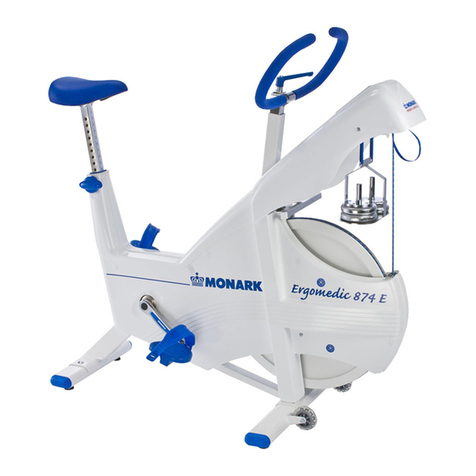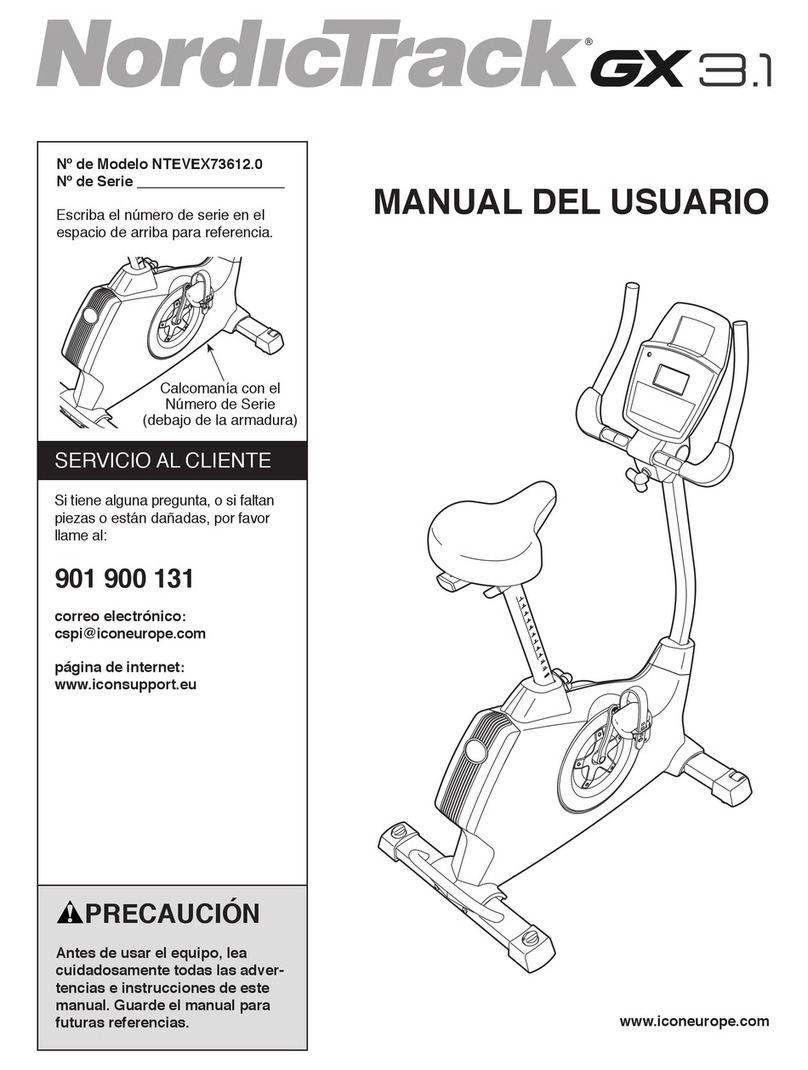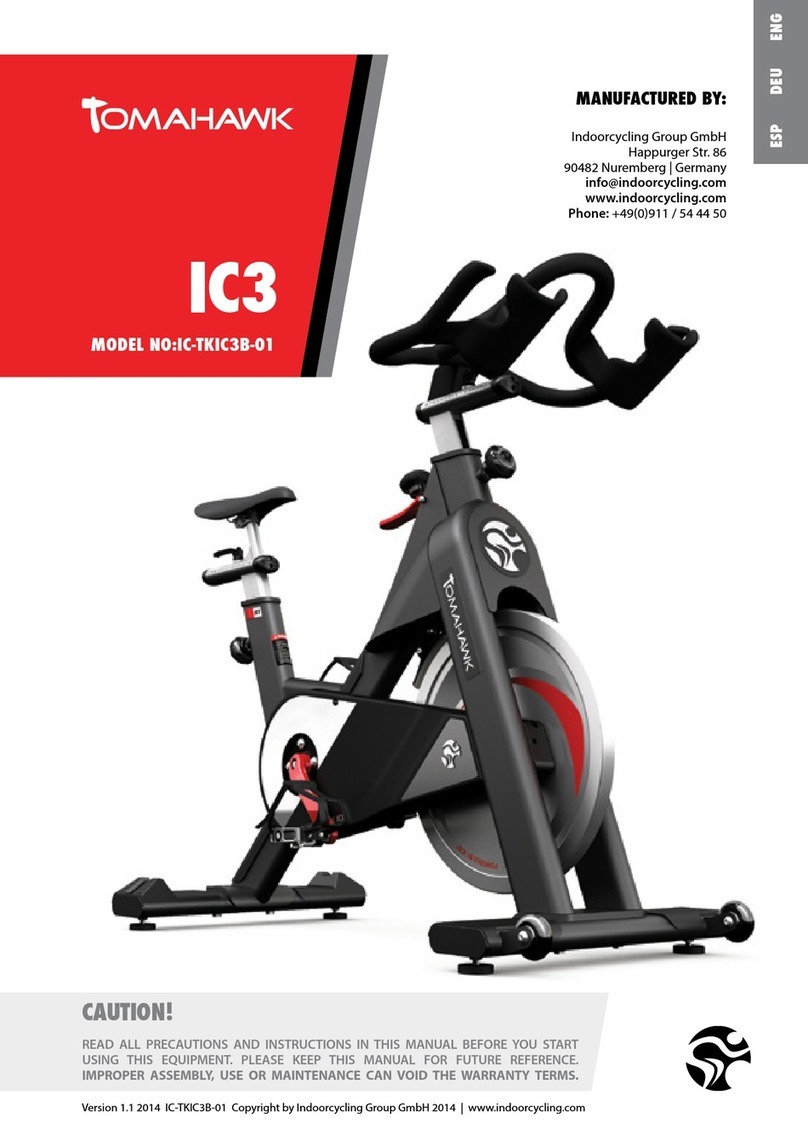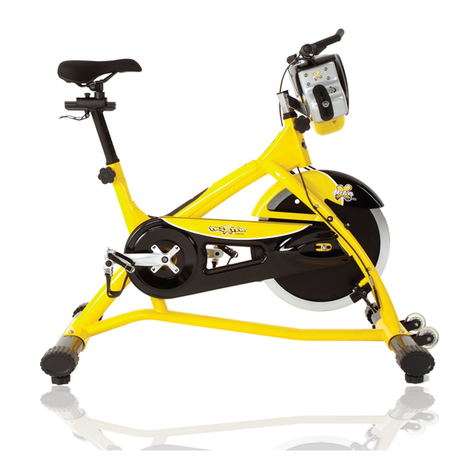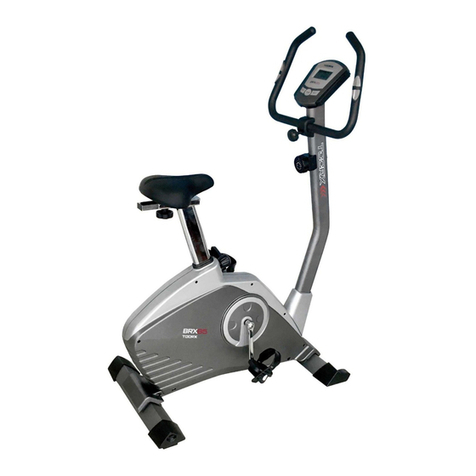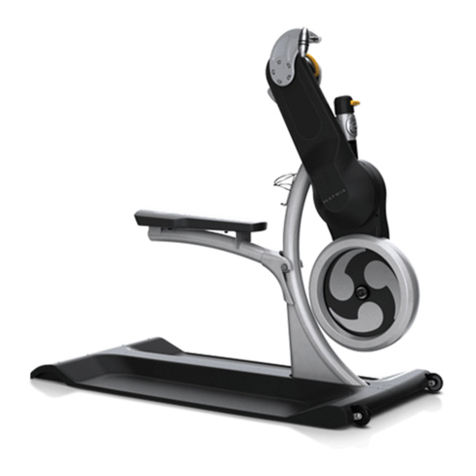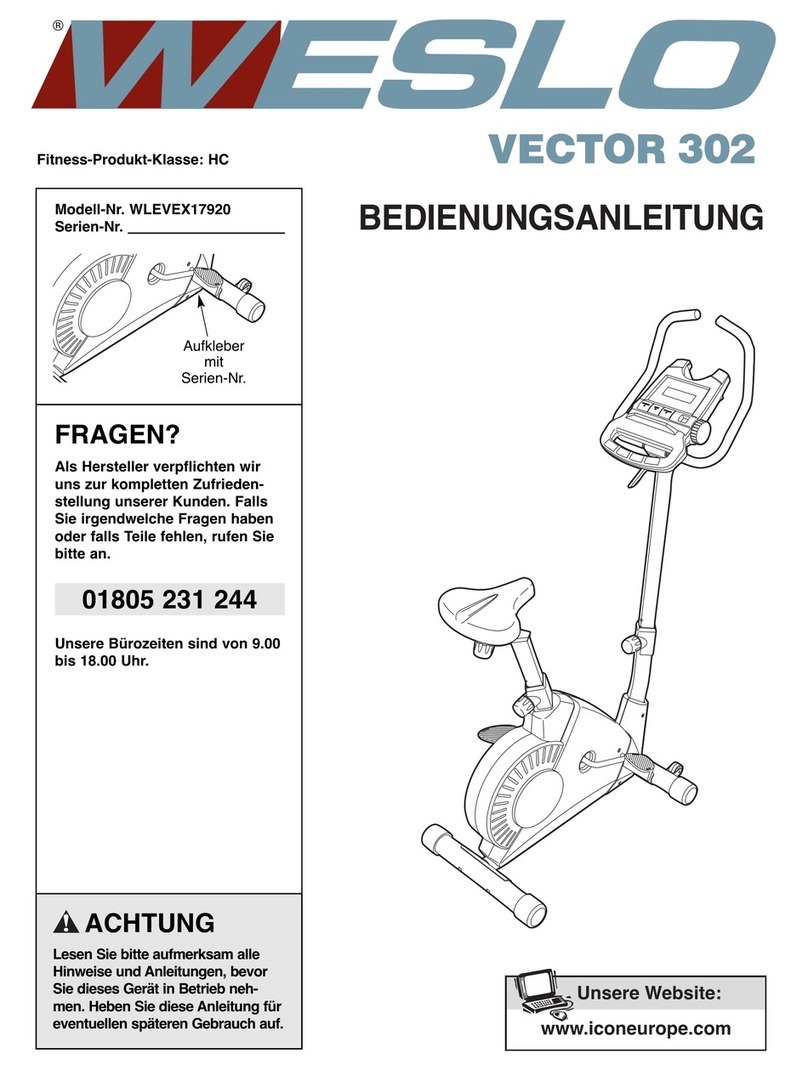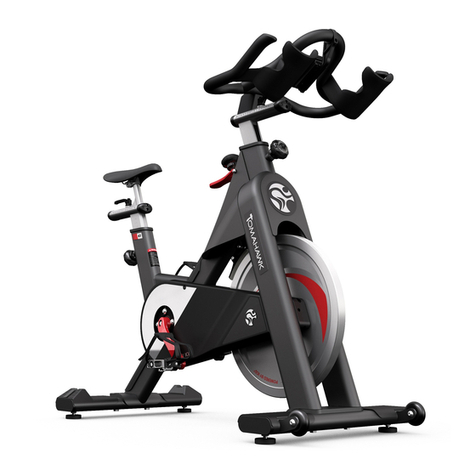Facts
Fig: Polarity
Technical details
Length 1900 mm (75")
Width 680 mm (26 3/4")
Height (max at display) 1065 mm (42")
Height (max at display) 1000 mm (39 1/3")
Weight 87 kg
Weight flywheel 20 kg
Max user weight 250 kg
Painting Industrial powder coating
Rust protection Zinc-based basic powder coat
ing on exposed areas
Power output
Continuous (50-100 rpm) 4-700 W
Peak (at rpm) 1400 W (200 rpm)
Smallest increment 1 W
Product Information
Serial number
The serial number is located on machine plate (5)
according to Fig: Overview.
Technical data power adaptor (accessory)
Output voltage: +9 V DC
Current: 500 mA
Polarity: Minus (-) in the middle of connector. See Fig:
Polarity.
(Art. No. 9384-650, USA Art. No: 9384-62)
Initial operation
RT2 is mechanically calibrated in the factory. The
user may still want to check this. For the procedure,
see section "Calibration".
If you use power adaptor (optional): First, connect
the power adaptor to the power connector on the
right side of the recumbent, see Fig: Overview. Then
plug the power adaptor into the wall outlet.
Perform the electrical calibration as specified in section
"Calibration”. Test by pedalling the recumbent. If the
recumbent works properly, it is ready for use.
Power on crank or ywheel
Monark bikes measure the effect of the flywheel, so it
will be a friction of 6-8% if you measure the impact
of the pedals (measure the effect of the crankshaft,
the difference is 4-5 %). These percentages will be
primarily due to friction in the chain, pedals and
bearings.
RT2 is set to measure the workload at the flywheel.
The bike can be set to work with effect in the pedals /
crankshaft (the cycle constant).
Recommended accessories
Calibration weight, 2 and 4 kg•
Chest belt•
Power adaptor•
NOTE! Before you start using the recumbent -
remember to remove any transport protection and
protective tape on the flywheel.
Calories
There have been different theories on how to calculate
this, since it depends on several factors and this means
that it can only be seen as an estimate.
As a standard calculation, when we display calories
on our calibrated bikes, we use: 1 minute with 100W
gives 7 kcal. It is easy to convert watts to calories if it
was on the flywheel, the formula is 1W=0,2388x10-3
kcal/s with four decimals. But when you normally
show calories you want to show the total amount of
calories your body has used during your training, not
only the calories "burnt" on the flywheel.
We have chosen the formula given above that we
think complies with the results given for a standard
cycle position.
Monark Exercise AB recommends that you
check the mechanical calibration once a year
to ensure the cycle's accuracy.
